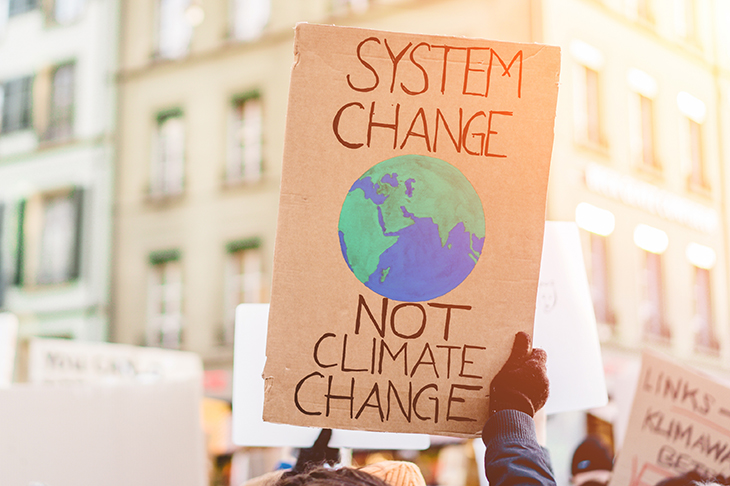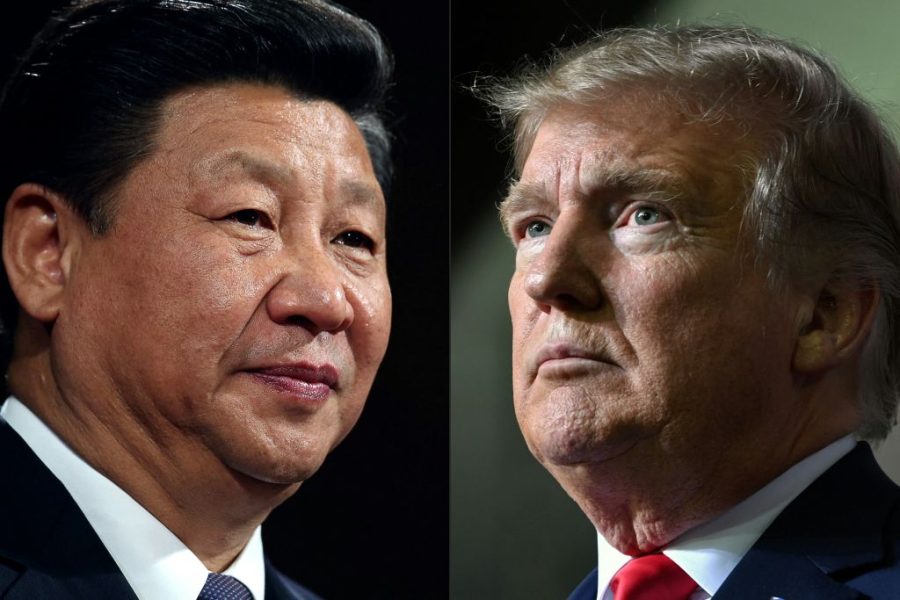When last week’s IPCC report warned that the human race may soon have trouble feeding itself, my reaction was: duh. Having pooh-poohed the 1960s ‘population bomb’ alarmism that would have us all balancing on our allotted five square inches of Earth by now, we’ve grown complacent about increasing our 7.7 billion world population by at least a quarter in the next 30 years, and by about half in 2100, when we’re likely to number around 11 billion.
Perhaps it’s forgivable that an outfit called the ‘Intergovernmental Panel on Climate Change’ would blame a perilous future food supply on climate change. Yet it’s astounding that in the report’s broad news coverage I never encountered mention of the main driver of agricultural stress. After all, what causes climate change? Even according to the most fervent of climate activists, the culprit is people. More people, more carbon emissions: double duh.
Back when human population was escalating unsustainably worldwide, demography was politically relaxing. We’re all in this together, we all have to have smaller families: the exhortations were high-mindedly globalist. But then fertility in the West plummeted to below replacement rates virtually overnight. Though also subsiding, birth rates still remained concerningly high in what we then called ‘the Third World’.
This was awkward. No one wanted to lecture what Donald Trump calls ‘shithole countries’ with any hint of condescending colonialism. For decades, therefore, demographic PR ditched preaching contraception and focused on bolstering women’s rights, which correlate conveniently with having fewer children. The great and the good continue to feel uncomfortable about addressing the burdens of the population growth that’s now overwhelmingly located in Africa and the Middle East. It’s far more politically palatable to anguish about climate change.
As Africa’s population almost doubles by 2050 and reaches an anticipated 4.3 billion by 2100, expect more of this fig leafery. The resultant migrants to Europe will all be branded climate refugees. But in the main, on a continent that has never been especially hospitable to human life, they will really be population refugees. You’re unlikely, by the way, to ever trip across that term outside this column.
I’ve been uncharacteristically agnostic about climate change — sorry, Guardian, climate emergency. It’s actually the graph of human population, puttering along in the dirt for 200,000 years and then cutting to a near-vertical and streaking to the firmament over a mere 200, that most convinces me that an infestation of one animal on this planet — worse, an animal entranced with various forms of playing with fire — could credibly alter the weather. I’m less convinced that we can control such a complex, interrelated system like climate on purpose, technically or politically.
The weird thing about this issue is the feeling it seems to evoke in the West of orgiastic guilt. What makes the great and the good so at ease with raising the climate alarm is the often-tacit assumption that global warming is all the West’s fault. That makes inhabitants of Africa and the Middle East victims of our own short-sighted profligacy. Brilliant. Break out the hair shirts.
Yet I wonder whether even the rabble-rousers behind Extinction Rebellion (winner of The Most Ungainly Protest Movement Title Ever award) have studied the figures. If you do accept the whole human-caused-warming model, the numbers are shocking all right, but I may not be referring to the statistics you think I am.
As of 2017, of worldwide carbon emissions, the US accounted for 13.7 percent, Canada 1.6 percent, Down Under 1.1 percent, and the entire EU 28 only 9.6 percent. Ergo, ‘the West’ is responsible for a mere 26 percent of emissions. The UK, where in a few short years activists would have us all boiling the water for our tea by breathing on it, emits a whole giant 1 percent of global carbon.
By contrast, China is responsible for 29.3 percent, which is four and a half times its emissions in 1990. India may ‘only’ account for 6.6 percent, but that figure has multiplied by four times in three decades. I’ve visited both countries, where traffic is often at a standstill, and you could cut slices of brown air and serve it for dessert like chocolate cake. (I was glad to visit both places, but even gladder to go home.)
Especially in India, a continued escalation of emissions is a foregone conclusion. By all means cut out the hamburgers if you’re slimming, but don’t do so to keep the temperature down.
Even per capita carbon footprints aren’t what you might expect. Oh, those evil, indulgent Americans must be the worst. Uh-uh. By far the highest emissions per head are in Qatar, Kuwait, the UAE, and Saudi Arabia. Americans, Canadians, and Australians occupy the same middle range, while Britons are downright saintly — already — at well under half of American emissions per person.
As for the trend, emissions in the US and EU are steadily coming down. Starting in 1990, a graph of ‘other countries’ (that is, excluding the US, the EU, China, Russia, India and Japan) traces an unrelenting upward trajectory with a gradient of about 45 degrees. These ‘other countries’ now match China in total emissions.
So I hate to break it to you: the climate emergency is not now, in the main, accelerated by the West, and the solution, if there is one, is not in our hands. Western technological innovation in energy and transportation might help some if we export it. But cycling to work is good for your thighs; it won’t rescue any glaciers.
The biggest driver of climate change and every other global headache you care to name — species extinction, deforestation, desertification, ocean acidification, pollution, fresh water scarcity, oceanic plastic, soil erosion, ‘irregular’ migration — is people. Too many of them, and born too fast.
At least another 2.3 billion more neighbors are on their way by 2050, and they will all aspire — understandably — to a western lifestyle. So if you care about these issues, supporting organizations that provide people living in Africa and the Middle East with access to reliable contraception is more effective than gluing yourself to a bridge.
This article was originally published in The Spectator‘s UK magazine.

























